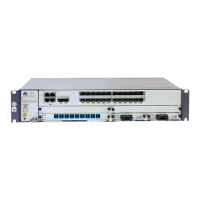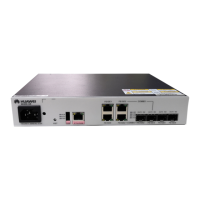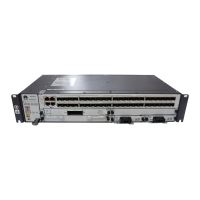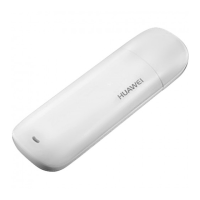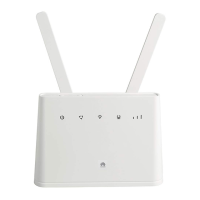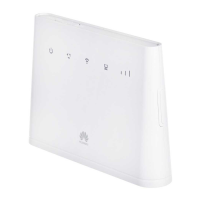– XFP: X is the Roman numeral 10, meaning that all XFP optical modules
provide a 10 Gbit/s transmission rate. XFP optical modules support LC
ber connectors. XFP optical modules are wider and longer than SFP+
optical modules.
– SFP28: with the same interface size as an SFP+ module. An SFP28
interface can use a 25GE SFP28 optical module or 10GE SFP+ optical
module.
– QSFP28: with the same interface size as a QSFP+ module. A QSFP28
interface can use a 100GE QSFP28 optical module or a 40GE QSFP+
optical module.
– QSFP+: quad small form-factor pluggable. QSFP+ optical modules
support MPO
ber connectors and are larger than SFP+ modules.
– QSFP-DD: quad small form factor pluggable-double density. A QSFP-DD
optical module is a high-speed pluggable optical module
dened by
QSFP-DD MSA.
– CXP: hot-pluggable high-density parallel optics transceiver form factor,
which provides 12 channels of trac in each of the Tx and Rx directions.
It applies only to short multimode links.
– CFP: C form-factor pluggable, a new standard for high-speed, hot-
pluggable optical transceivers that support data communication and
telecommunication applications. Dimensions of a CFP optical module are
144.75 mm x 82 mm x 13.6 mm (W x D x H).
– CSFP: A Compact Small Form-Factor Pluggable (SFP) module is a Gigabit
Ethernet transceiver with two bidirectional channels inside a conventional
SFP form factor to address high-density port requirements in FTTx
deployments.
– QSFP-DD (Quad Small Form-Factor Pluggable-Double Density) optical
module: It is a double-density four-channel small pluggable high-speed
optical module. QSFP-DD is currently the preferred encapsulation mode
for 400G optical modules, enabling data centers to
eectively increase
and expand cloud capacity as required. A QSFP-DD optical module uses
8-channel electrical interfaces. The rate of each channel reaches 25 Gbit/s
(NRZ modulation) or 50 Gbit/s (PAM4 modulation), providing up to 200
Gbit/s or 400 Gbit/s aggregation solutions.
●
Classied by physical layer standards
Dierent physical layer standards are dened to allow data transmission in
dierent modes. Therefore, dierent types of optical modules are produced to
comply with these standards. For details, see Standards compliance of the
specic optical module.
●
Classied by modes
Optical bers are classied into single-mode and multimode bers. Therefore,
optical modules are also classied into single-mode and multimode modules
to support
dierent optical bers.
– Single-mode optical modules are used with single-mode bers. Single-
mode
bers support a wide band and large transmission capacity, and are
used for long-distance transmission.
– Multimode optical modules are used with multimode
bers. Multimode
bers have lower transmission performance than single-mode bers
HUAWEI NetEngine 8000 F
Hardware Guide 3 Hardware Description
Issue 05 (2023-03-31) Copyright © Huawei Technologies Co., Ltd. 100

